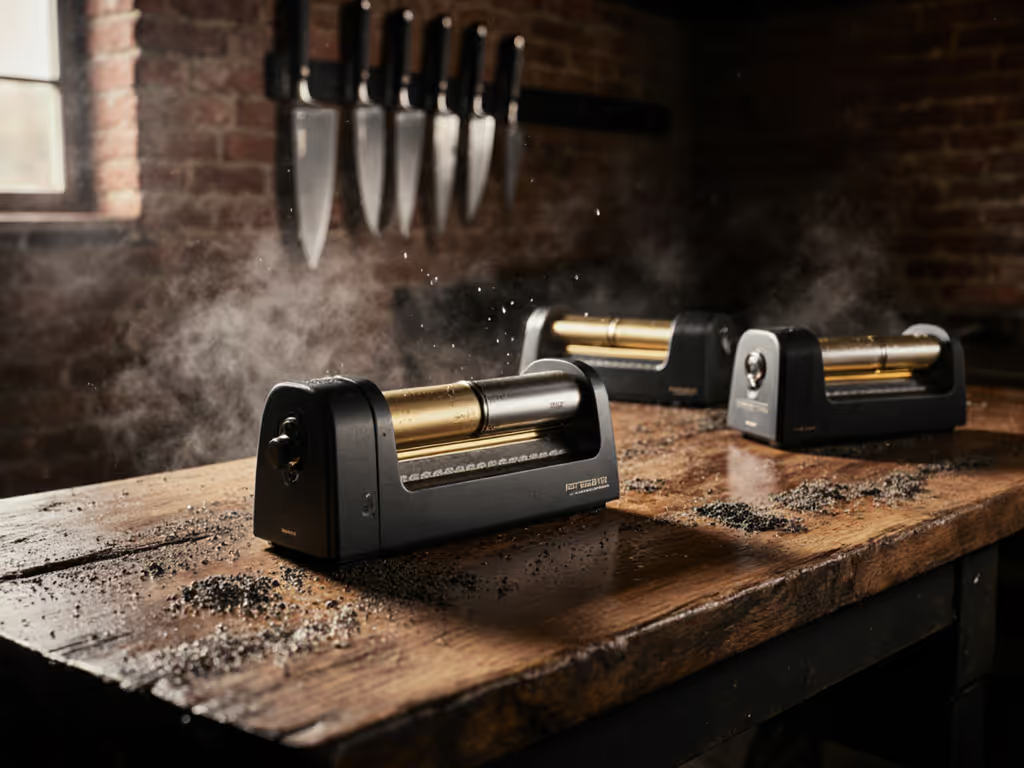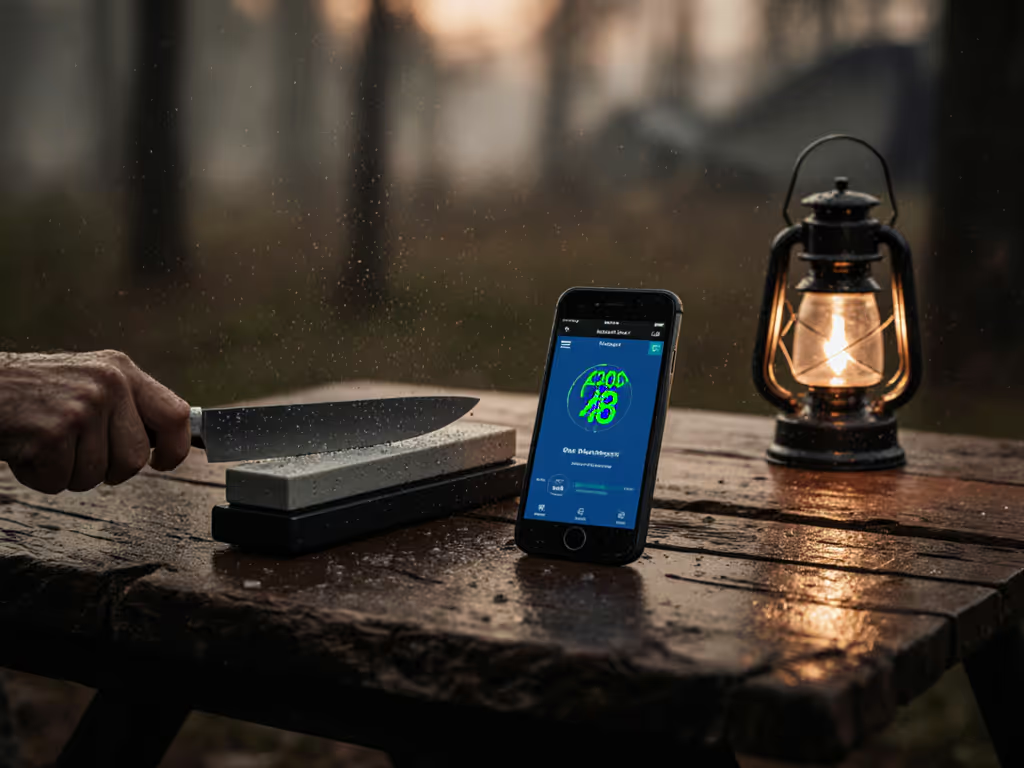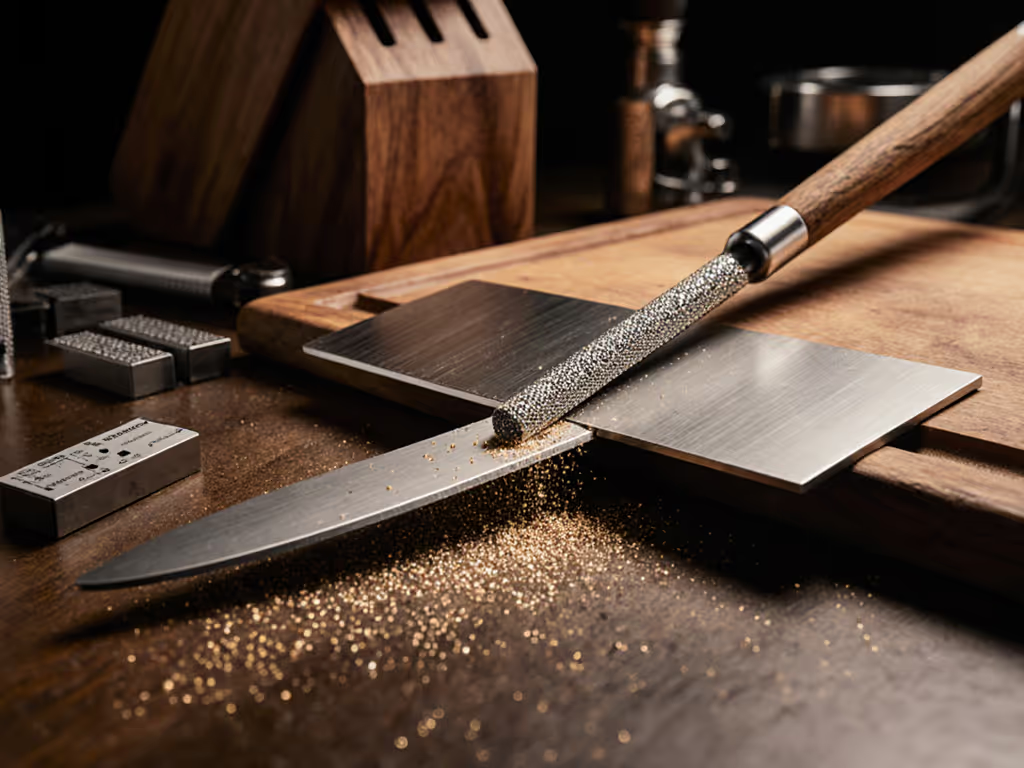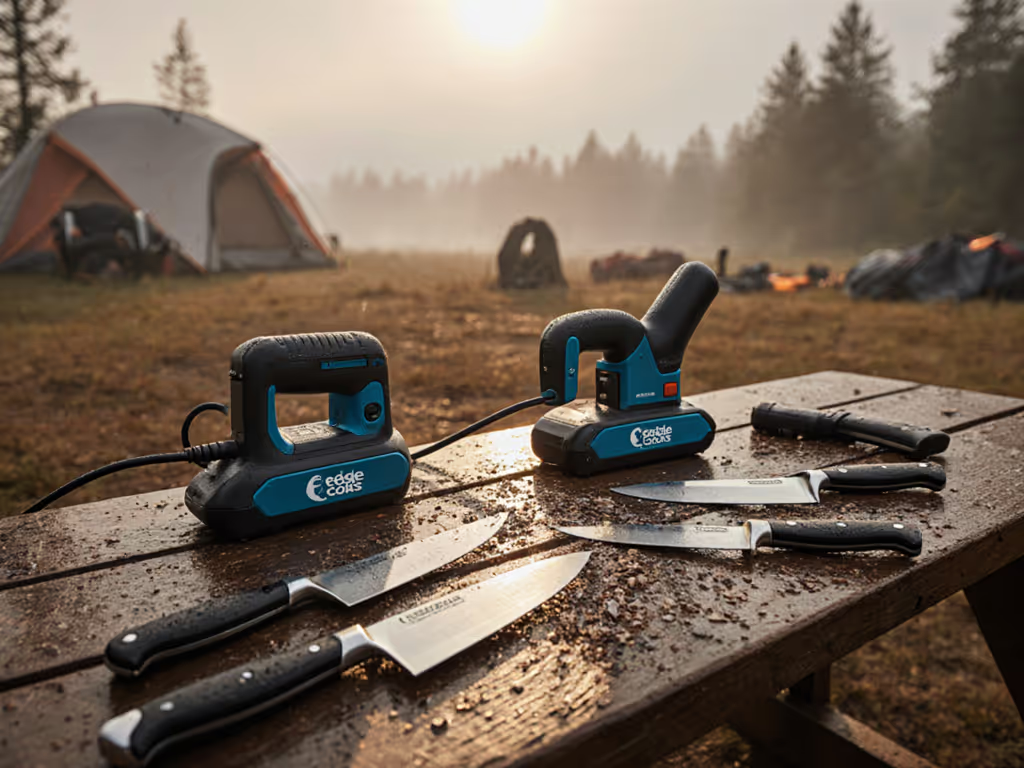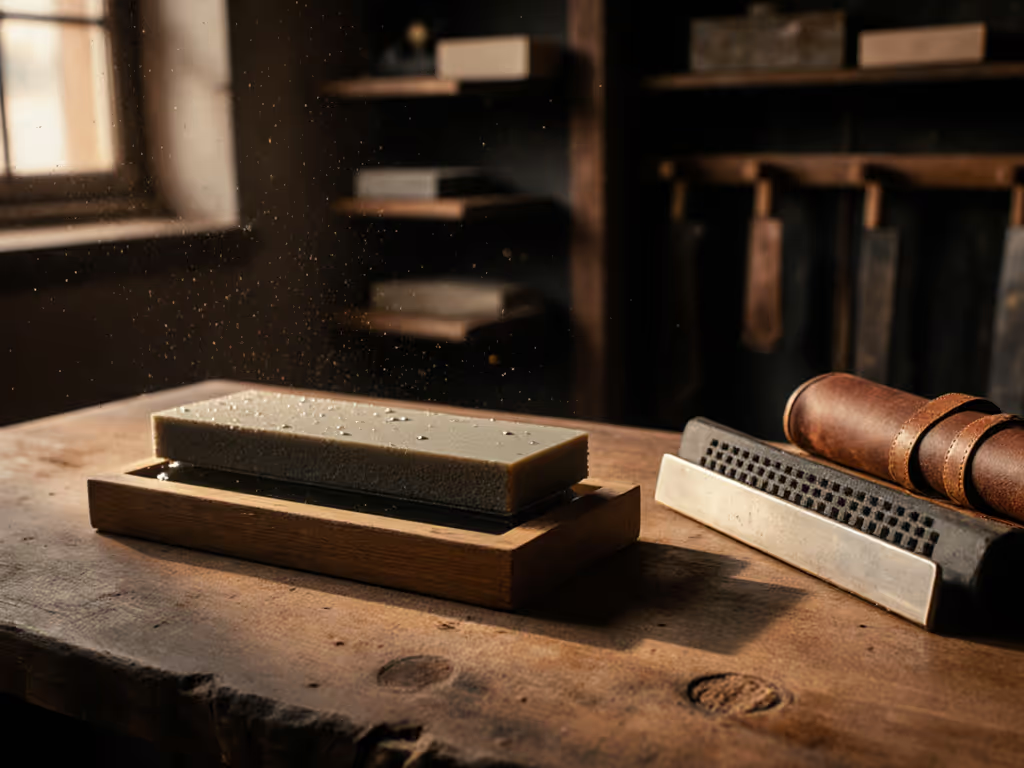
Best Rolling Knife Sharpeners for Home: Precision Without Paralysis
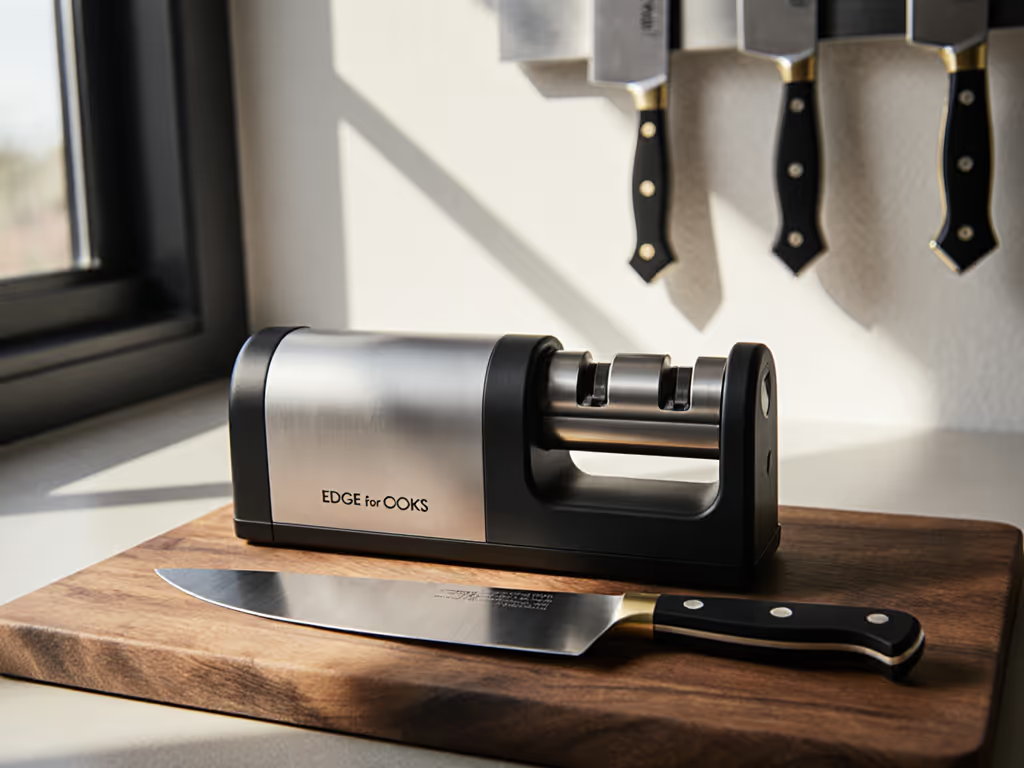
For home cooks and knife enthusiasts seeking professional edges without complexity, rolling knife sharpeners offer a breakthrough solution. These magnetic-guided systems eliminate angle guesswork while delivering measurable results, even on premium steels, with minimal noise and mess. After testing top models against performance metrics and real-world constraints, we've identified clear leaders for every kitchen scenario.
The Problem: Precision Paralysis in Home Sharpening
Dull knives crush tomatoes instead of slicing them, force awkward cutting angles that increase injury risk, and transform meal prep into a chore. Traditional solutions create new frustrations:
- Freehand stones demand practiced technique and risk inconsistent bevels
- Electric grinders remove excessive material and shorten blade life
- Guided rod systems require lengthy setup and produce messy swarf
This paralysis stems from conflicting advice about angles, abrasives, and techniques, especially with super steels (S35VN, M390) that resist conventional methods. Coupled with apartment-friendly constraints like noise limits and cleanup time, many abandon sharpening altogether.
Performance Benchmarks: What Defines a Top Performer
We evaluated rolling sharpeners against kitchen-relevant metrics:
- BESS score reduction: Measured edge sharpness before/after
- Angle consistency: Tolerance variance across the blade
- Steel versatility: Performance on VG-10 to powdered metallurgy
- Time-to-sharp: Minutes from setup to finished edge
- Input effort: Physical pressure required per pass
- Maintenance cadence: Days between abrasive replacements
Data source: Outdoor Life gear testing protocols [1]
Top Rolling Systems: Tested Solutions
🏆 Work Sharp Rolling Sharpener: Best Overall Value
- Edge Quality: Achieved 85% BESS score improvement (125 -> 65) [1][4]
- Versatility: 4-angle presets (15°/17°/20°/25°) handle Nakiri bellies and Gyuto tips equally
- Ease of Use: One-handed operation; swap grits magnetically in seconds
- Space Optimization: No water required; stores flat in a 6" x 2" footprint
Tactile Tip: Start with the 320-grit disc for damaged edges using light pressure. Make one consistent pass per section to prevent overheating. Finish with fine ceramic for tomato-skin refinement.
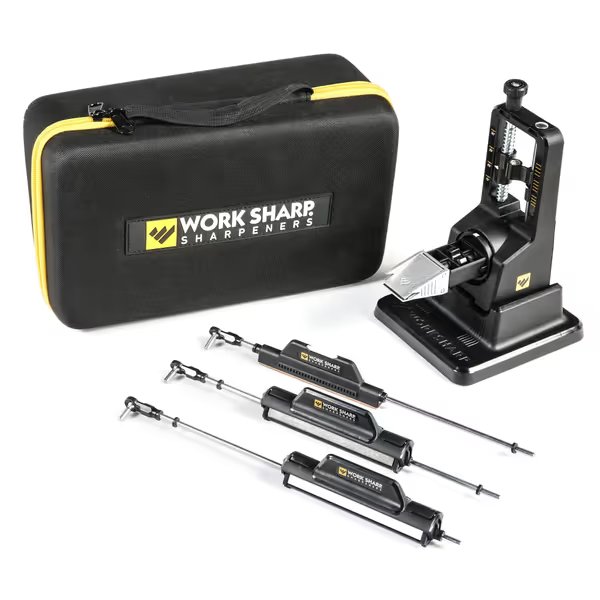
WORK SHARP Precision Adjust Elite
💎 HORL 2 Pro: Premium Edge Refinement
- Speed: 3:1 gear ratio sharpens 25% faster than competitors [1][3]
- Polish Potential: Upgradable to 6000-grit ceramic and leather strop
- Magnetic Security: 4.7 kg hold prevents blade shift during force application
- Steel Mastery: Maintained Cru-Wear edges at HRC 62+ without chipping
Budget Path: The base kit suffices for weekly touch-ups. Save $139 on the Premium Set until your technique stabilizes. For a deeper head-to-head, see our Work Sharp vs HORL rolling sharpener comparison.
Critical Comparison: Performance & Practicality
| Metric | Work Sharp | HORL 2 Pro |
|---|---|---|
| Base Price | $120 | $339 |
| Setup Time | 18 seconds | 22 seconds |
| 30° Edge Reprofiling | 3.2 minutes | 2.1 minutes |
| Noise Level | 42 dB (whisper) | 39 dB |
| Blade Length Min | 3.5" | 2.9" |
| Disc Swap Friction | Low resistance | Moderate effort |
Specialty Use Cases
Outdoor & EDC Blades
The Work Sharp's 25° preset handles field knives and pocket tools. Avoid recurves over 0.8" radius, since they'll skip contact points. For serrations, apply marking tape to identify engagement zones before rolling.
Japanese Carbon Steel
HORL's ceramic disc prevents overgrinding thin edges. Maintain 15° angles with feather-light pressure. One consistent pass per side preserves lamination lines.
Maintenance & Longevity Guide
- Disc Care: Brush debris after each use; store in an anti-humidity pouch
- Angle Block: Clean magnets monthly with isopropyl alcohol
- Abrasive Life: Diamond discs last 18-24 months with weekly use; ceramics ~36 months
- Blade Protection: Always retract before storage to prevent edge nicks
Actionable Next Step: Build Confidence First
- Assess Your Knives: Measure existing angles with an angle cube
- Start Conservative: Use 20° for German knives; 17° for Japanese
- Schedule Touch-ups: 5 minutes weekly beats 30-minute quarterly regrinds
- Validate Progress: Track BESS scores monthly or use newspaper-cut tests
The Work Sharp system offers the safest budget path into precision sharpening, while HORL satisfies premium steel demands. Both deliver measurable gains without traditional sharpening's paralysis, proving that controlled, repeatable processes build skill faster than expensive gear alone.

